As a child, I used to watch my mom massage her temples whenever she had headaches. She told me it worked better than painkillers, and she was right. It wasn’t until I attained adulthood that I discovered that my mom had been simply practicing acupressure therapy. Recently, I discovered some essential pressure points on the forearm that will save you a trip to the doctor for a very long time.
For some people, issues as little as wrist pain, shoulder pain, arm pain, and muscle pain are reasons to see the doctor. Surprisingly, these are issues that the body itself can treat. By massaging the pressure points in the forearm which I’ll be showing you in this article, it’s goodbye to stiff shoulders, elbow pain, nausea, cough, eye fatigue, and even autonomic dysfunction.
Where Do You Put Pressure On Your Forearm?

Looking at the structure of the forearm, you begin to wonder where these magical pressure points are located and how to press them. The good news is that these forearm pressure points are not abstract. They are right there in the forearm musculature.
There are several pressure points on the arm, but we’ll show you the essential ones that you must know to solve daily bodily issues and discomfort like nausea and cough. I’ll not only show you where these pressure points are located but also point out how they should be stimulated.
The reason for this is that it is only when you apply the right pressure on these pressure points that they’ll be able to reduce muscle tension, restore health to your body, and strengthen your immunity against diseases. So, I’ll proceed to show you these pressure points in the arm that you must know and how to apply pressure on them to enjoy their benefits.
For Elbow Pain, Stiff Shoulders, Numbness In The Hands
Acupoint: LI-11 (Other Names: Large Intestine-11/Qu Chi/Pool at the Crook)
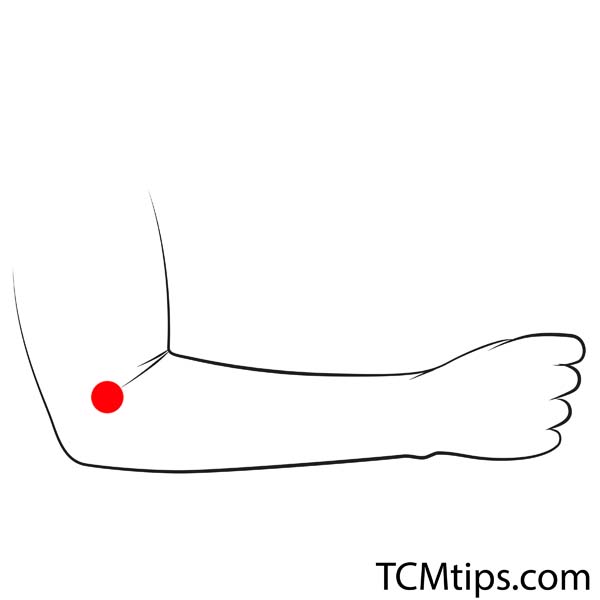
LI-11 or Quchi, as it is called in Chinese, is the right pressure point on the forearm for elbow pain, numbness in the hand, and stiff shoulders. To locate this acupoint, bend your arm such that your fingers are touching your shoulder. The endpoint of the crease that forms on your elbow is LI-11.
In Traditional Chinese Medicine (TCM), pushing LI-11 will assist blood flow, water, and even stool flow, thereby cleaning up accumulated physical problems. This is why LI-11 is also the ideal treatment for fever, malaria, and sore throat. It is also one of the acupressure points for cervical spondylitis.
All you need to do to benefit from Quchi is to apply firm pressure with your thumb on the pressure point for 10 to 30 seconds until you feel relief. Do this 5 to 6 times.
For Autonomic Dysfunction
Autonomic dysfunction concerns the Autonomic Nervous System (ANS). ANS is in charge of the involuntary and unconscious functions of the body such as body temperature, sensation, and breathing rate. Autonomic dysfunction, therefore, is damage to the ANS nerves, and the symptoms include dizziness when you’re standing, digestive issues, and abnormal sweating.
Although a serious medical problem, autonomic dysfunction can be easily sorted out by massaging acupoint LI-10.
Acupoint: LI-10 (Other Names: Large Intestine-10/Shou San Li/Arm Three Miles)
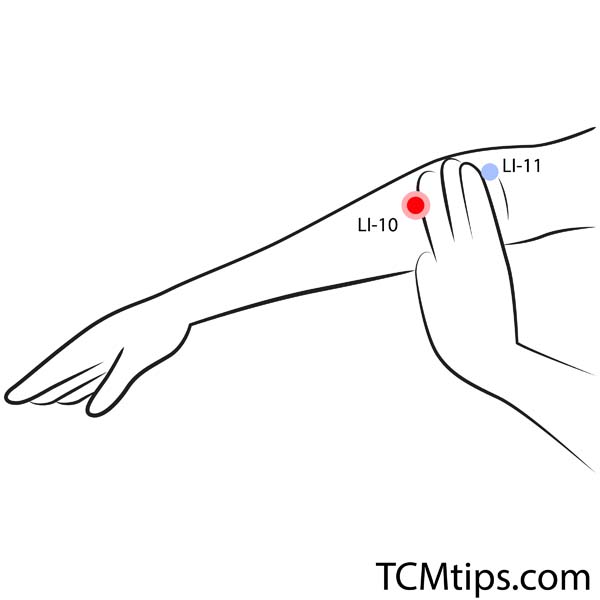
LI-10 is one of the effective pressure points in the forearm for autonomic dysfunction. It is called Shousanli and is located close to LI-11. To find LI-10, bend your hand ninety degrees, then place three fingers on the lower arm from the end of the crease of the elbow. The point where the third finger rests is LI-10.
When you massage this acupoint, a signal is sent to your brain that causes the upper spinal reflex to act on the autonomic nerves, thus exciting the parasympathetic nerves. In short, your body will feel relaxed. In addition to treating pain, numbness, and regular sickness, LI-10 is one of the acupressure points to reduce arm fat.
Massage LI-10 the same way as LI-11 to adjust the autonomic nerves and reduce the symptoms of the dysfunction.
Acupoint: TE-5 (Other Names: Triple Energizer-5/Wai Guan/Outer Pass)
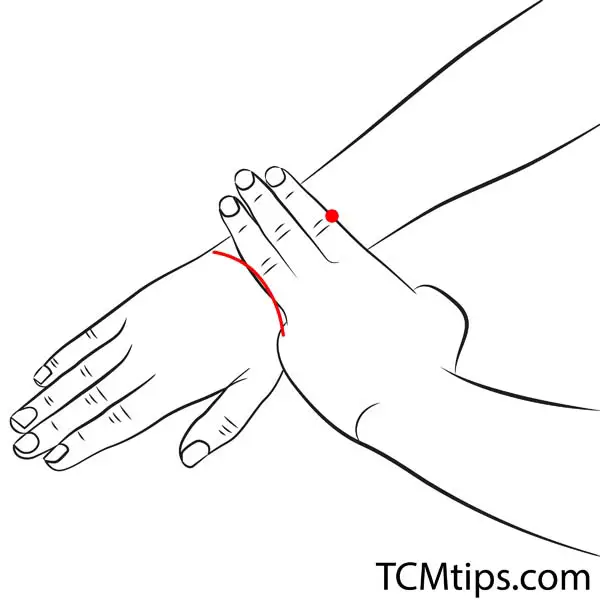
TE-5 or Waiguan, as it is called in Chinese, is another effective forearm pressure point for autonomic dysfunction. You’ll find TE-5 at the back of the forearm, three-finger width from the wrist crease, between the radius and ulna bone.
Stimulating TE-5 adjusts the autonomic nerves and brings relief to headaches and fatigue, which is why It is effective in treating abdominal pain, pain in the fingers, wrist pain, and hand tremor. Research shows that applying warm acupuncture on TE-5 improves shoulder pain and limb motor functions of post-stroke patients. It is an acupressure point for calming the nervous system.
To enjoy the healing power of TE-5, happy firm pressure on the acupoint for 5 seconds, then gently release to repeat the action three times.
For Stomach Discomfort And Nausea
Acupoint: PC-6 (Other Names: Pericardium-6/Nei Guan/Inner Pass)
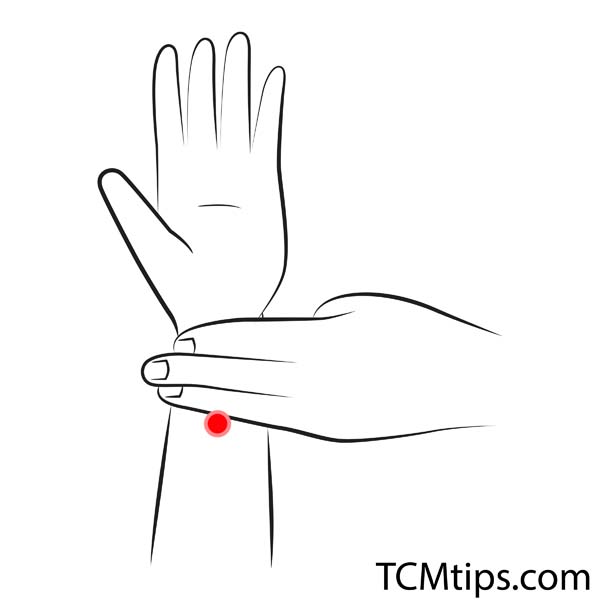
PC-6 or Neiguan is a popular pressure point in TCM. It is one of the pressure points in the forearm that can bring you bodily comfort. To locate this acupoint, face your palm upwards, then place three fingers from the crease of your wrist, between the two tendons in line with the middle finger. Where the third finger rests is PC-6.
PC-6 helps bring back a sense of balance, which is why it is effective in bringing relief to stomach discomfort, motion sickness, and even dizziness. It is also effective in treating insomnia as well as one of the acupressure points for good digestion during menopause.
For Cough Relief
Acupoint: LU-5 (Other Names: Lung-5/Chi Ze/Cubit Marsh)
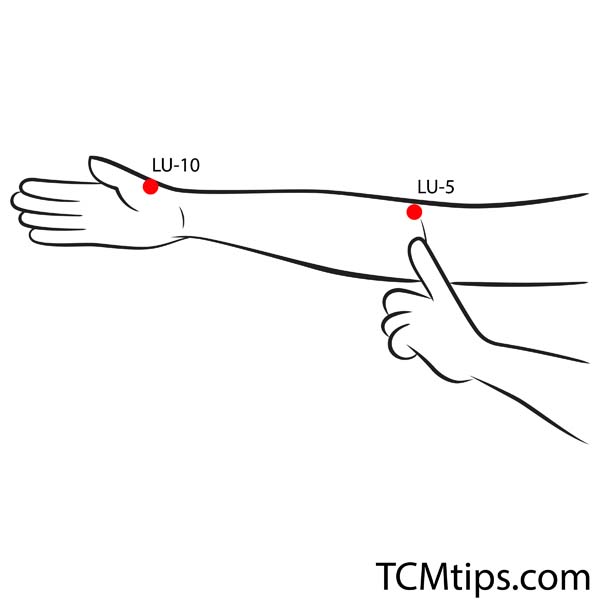
When you have a cough, the arm pressure point to resort to is LU-5. This lung meridian acupoint is known as Chize in Chinese and it is located in the crease of the elbow. It is the point in the crease of the elbow that is traceable to the thumb.
In addition to bringing relief to cough, Chize is effective in treating asthma, chest congestion, and infantile convulsion. All you need to do to enjoy the health benefits of Chize is cross your arms, hold the acupoint firmly with the thumb of your other hand, and press for 3 to 7 seconds until you feel relief from coughing.
For Eye Fatigue, Red Eye, Presbyopia
Acupoint: SI-6 (Other Names: Small Intestine-6/Yang Lao/Support the Aged)
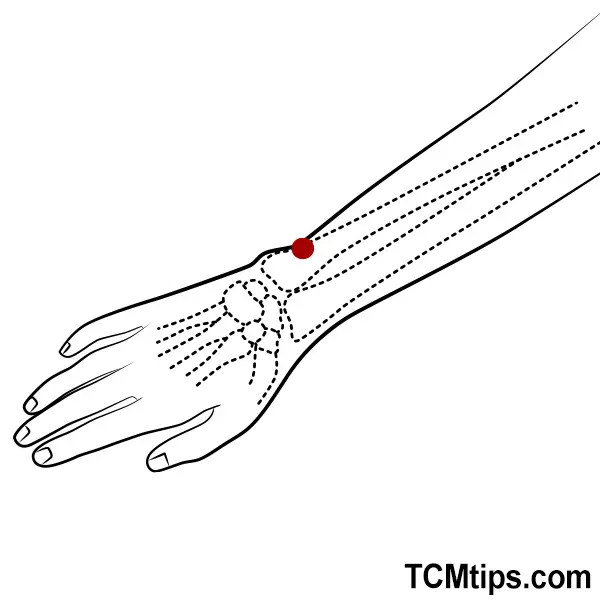
The last of the pressure points in the forearm in this article is SI-6. This small intestine meridian acupoint is mostly used by the aged ones whose eyes are fatigued. It is called Yanglao in Chinese and is located at the back of the hand, in the depression near the head of the ulna (the bone jutting out on the wrist).
Stimulating SI-6 also reduces shoulder pain, joint pain of the upper limb, rheumatism, and numbness from the shoulder down to the elbow. All you need to do is place your thumb on the acupoint while supporting your wrist with the remaining fingers and then massage for 1 to 2 minutes. You can shake the back of your hand up and down while applying pressure to the acupoint for it to be more effective.

Try our Anti-Aging Gua Sha Tool designed to bring out your skin’s natural glow.
Best Gua Sha Product- Anti-Aging: The tool is designed to target 11 specific aging signs such as wrinkles and sagging skin. By following the 7-step routine, users can improve skin firmness and reduce fine lines naturally.
- Enhances Skincare Routine: It works effectively with serums and lotions, boosting absorption and efficacy of skincare products.
- Visible Skin Improvement: Users can expect a smoother complexion, reduced puffiness, and a more youthful appearance.
 P. Sze
P. Sze 

















